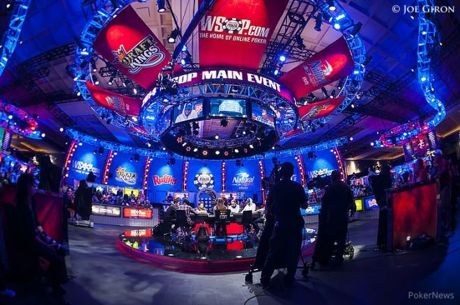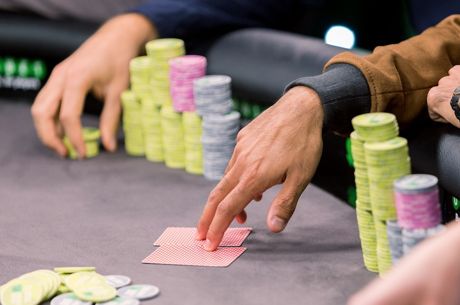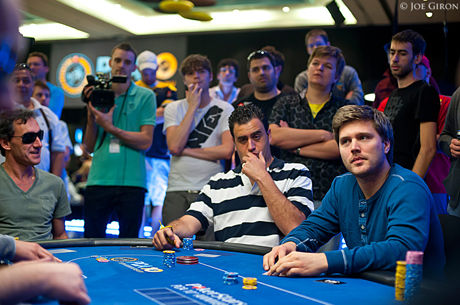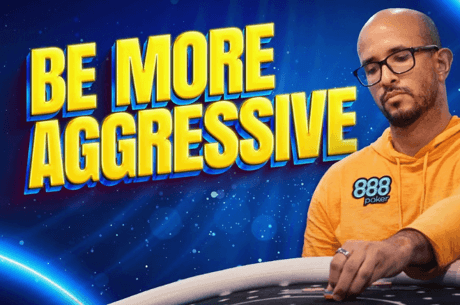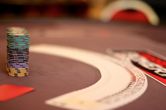The Hidden Power of the Continuation Bet Bluff in Tournament Poker

You are at the final table. It��s your moment. Every chip you win or lose controls your fate. You raise preflop and your nemesis calls. The flop comes K?8?4? and you miss with your once beautiful J?10?. How do you win the most? More importantly, how do you do it in a way your opponent cannot notice?
This article and PokerSprout QuickTip video give you a glimpse at the full break down of continuation bet bluffing in tournament poker to maximize your profit while decreasing your risk �� every smart tournament player��s dream strategy.
Continuation Bet Bluffs
Continuation bets, or c-bets, are bets made after the flop by the preflop raiser with the design of continuing a show of strength. The power of the bet comes from the raiser��s ability to represent hands like pocket aces that other players usually reraise with preflop. If your opponent calls the preflop raise, the likelihood of him holding a strong hand postflop on particular boards is decreased.
The best c-bet bluffs are an extension of that idea. Likely postflop weakness creates fear. Fear experienced when facing a c-bet creates folds. Especially in tournament play, maximizing the value of the c-bet bluff keeps your stack growing with less risk. Every smart tournament player knows that avoiding risk is an invaluable part of tournament strategy. That means you need to find a way to create fear.
Let��s make your goal to focus on exploiting your opponent��s tendencies and the situation to maximize your return on what you risk versus what you stand to gain. After you achieve your goal, your tournament chip stacks will increase without as much risk.
Everyone gets dealt pocket aces from time to time. That isn��t powerful poker strategy. Everyone gets the same amount of aces in the long run. Poker strategy is creating edges on your competition that add up to make you into a consistent winner. Empires are built on consistency. Consistency in poker comes from using proper bet sizing �� in other words, from mastering fear.
Sizing Controls Your Winnings
A major key to getting the most value from a continuation bet bluff is in the bet sizing. The best c-bet bluff bet size usually is not the best value bet size.
Several factors go into determining the most profitable size for your c-bet bluff. Let��s zero in on your best bluff bet size choice with three important pieces of information:
- Cards on the board
- Preflop position of all players in the hand
- Accuracy of assumptions about your opponents
Remember, your c-bet is a bluff. All you want is for your opponent to fold. So let��s take a closer look at that K?8?4? board to find out how you can leverage it for your profit.
Board Cards and Sizing Your Bluffs
You just want the fold. So let��s build a strategy around understanding and achieving folds. You know that players fold too often when they are scared. Let��s scare them. C-bets on boards that help you more often than your opponent scare those opponents into folding.
As the preflop raiser, disconnected board cards favor you. It��s less likely on such boards that your opponent makes a pair, and it��s also less likely your opponent makes a draw. K?8?4? is that type of board.
If you need a reminder, this is the final table. The stakes are high. Nerves prevail. But just how scared is a player who believes that he needs a pair or a decent draw on this king-high board in order to continue profitably? The full situation is described by a word �� position.
Preflop Position and C-Bet Bluffing
On disconnected boards, position relates directly to fear of the c-bet.
Early position open-raisers should open rarely. Later position open-raisers should open frequently. Preflop reraises should be used more frequently to attack later position open-raises.
Now, combine those plays that get players value, like reraising good hands, with what it means when those players do not take those actions. In short, if a player neglects to reraise your preflop open-raise, only calling instead, you have narrowed down the most likely hands the player should hold.
Of course, players slow play with different frequencies and have different ideas about what is strong enough to play postflop when facing a bet. So let��s make your c-bet bluff plan more effective by acting on assumptions about particular opponents.
Assumptions and Successful Bluffs
Your goal as an intelligent and skilled bluffer is to characterize your opponent��s play as accurately as possible. You need to know his strategy better than he knows his strategy. Seek to gather information as if that information is chips from your opponent��s stack. Increasing your relative understanding of board composition, positions, past actions and more allow you to bluff more effectively. Assumptions and reads are what lead you to creating the necessary fear to get folds.
Your goal is to target the percentage of hands your opponent folds in a particular spot. One bluff size usually works in a tournament. Usually, that size is small in relation to the size of the pot. That is because even small sizes fold out the weakest hands �� the ten-highs and the queen-highs �� and that��s all you aim to accomplish with your c-bet bluff strategy. Most flop bet sizes fail to fold out a pair or better, so don��t risk a larger amount when it is not necessary.
Goal Time: Your C-Bet Bluff Strategy
Check out the PokerSprout QuickTip video below learn how to put all this together in order to find the perfect size to bluff on a K?8?4? board. You will learn to solve for a size based on your assumptions and the particular board texture. It��s goal time. Let��s get those wins that will turn you into a continuation bet bluffing monster!
Reid Young is lead instructor at PokerSprout, an on-demand video education service where bite-sized and laser-focused videos turbo charge your poker strategy quickly and efficiently. Start your free trial today at PokerSprout.com?and experience a better way to learn poker strategy.
Want to stay atop all the latest in the poker world? If so, make sure to get PokerNews updates on your social media outlets. Follow us on Twitter and find us on both Facebook and Google+!

